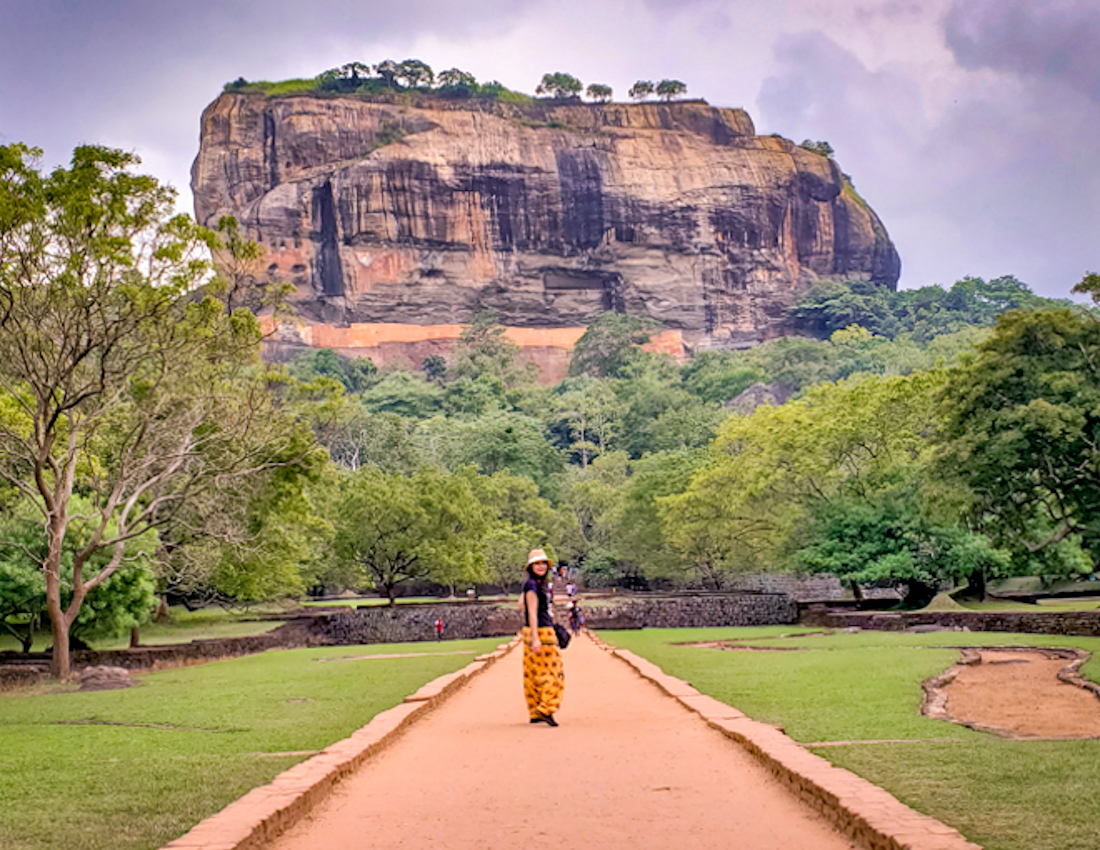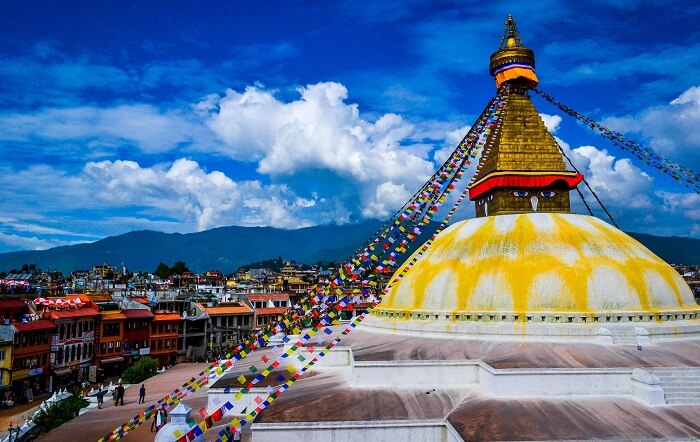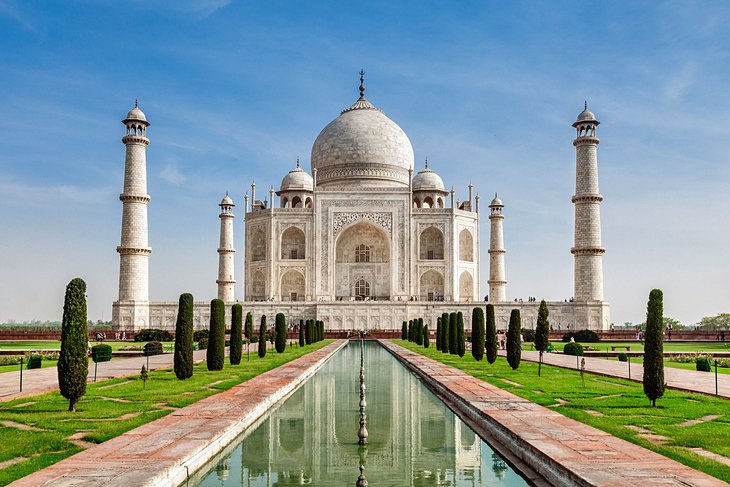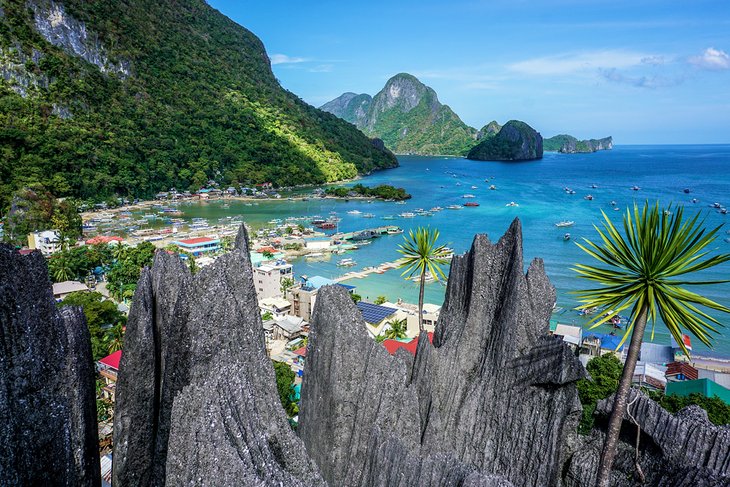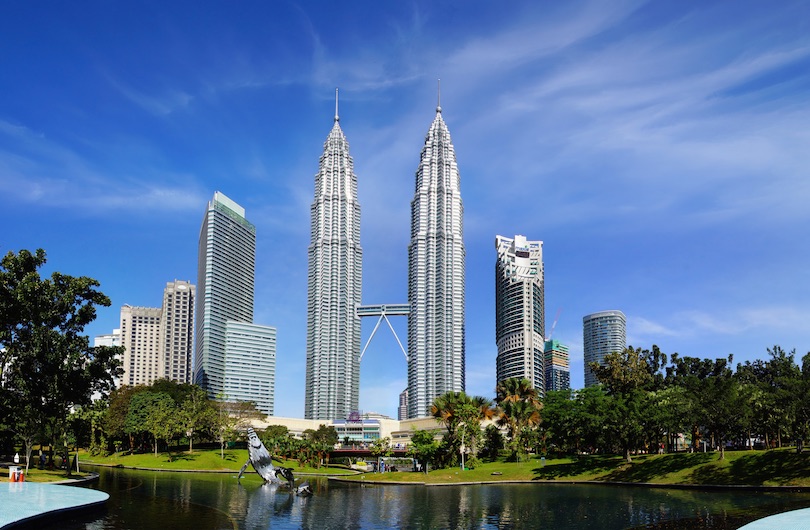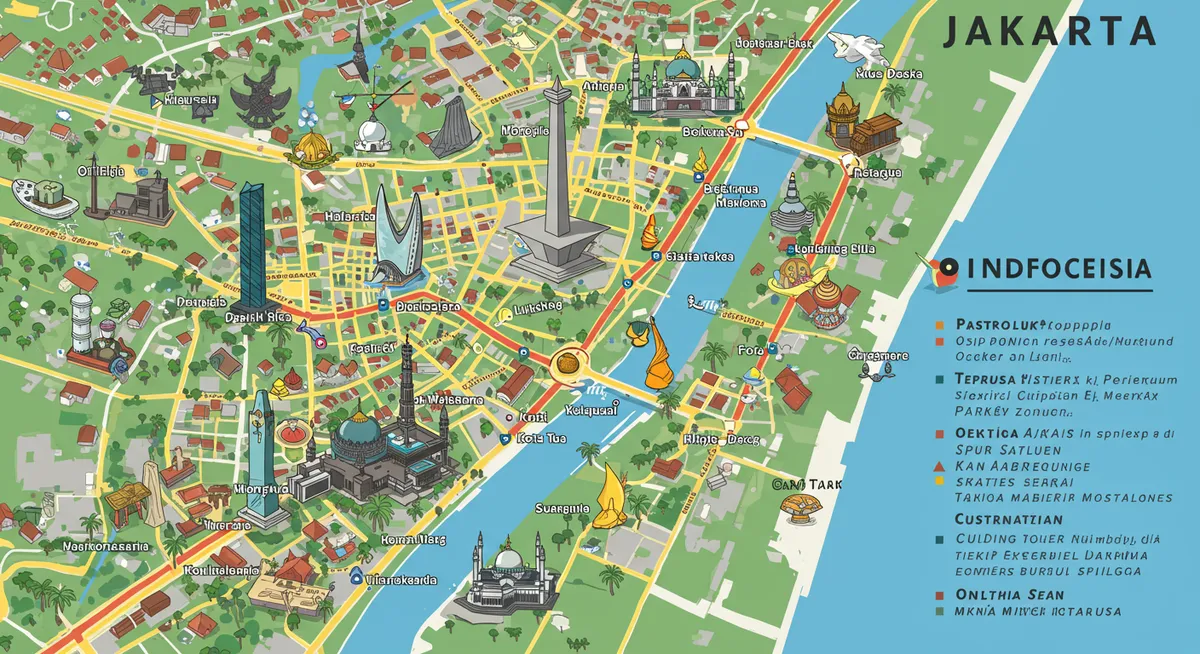
Jakarta, the sprawling capital of Indonesia, is a city that defies easy categorization. It’s a vibrant tapestry woven from threads of rich history, pulsating modernity, and an undeniable entrepreneurial spirit. From the echoes of colonial empires in its historic Old Town to the gleaming skyscrapers that pierce the tropical sky, Jakarta is a metropolis of constant motion, a place where the past gracefully intertwines with the future. For the intrepid traveler, this dynamic city offers an immersive experience, a sensory overload that rewards curiosity with unforgettable encounters.
This comprehensive guide aims to equip you with the knowledge to navigate Jakarta’s labyrinthine streets, savor its diverse flavors, and discover its hidden gems. Whether you’re drawn by its historical significance, its culinary delights, or its burgeoning contemporary scene, Jakarta promises an adventure unlike any other.
A Glimpse into Jakarta’s Storied Past
Related Articles about Jakarta: A Metropolis of Contrasts, Where History Meets the Future:
- Budapest’s Grandeur: A Journey Through Top Hotels and Timeless Charm
- Seoul’s Crown Jewels: A Guide to the City’s Top Hotels and the Heartbeat of the Metropolis
- The City of Angels: A Grand Tour of Los Angeles’s Best Destinations
- Sri Lanka: A Journey Through the Emerald Isle’s Greatest Treasures
- Oslo’s Grandeur: A Deep Dive into the Top Hotels and the City They Grace
Jakarta’s history is a compelling narrative of transformation. Its origins trace back to the 16th century as a small Sundanese port called Sunda Kelapa. Its strategic location on the northern coast of Java made it a coveted trading hub. The Portuguese were the first Europeans to establish a presence, followed by the Dutch, who, under the Dutch East India Company (VOC), seized control in 1619. They renamed it Batavia, and for over three centuries, it served as the administrative and commercial heart of the Dutch East Indies.
Batavia flourished as a center of trade, accumulating immense wealth for the VOC. However, this prosperity was built on a foundation of exploitation and hardship for the local population. The city witnessed periods of unrest, rebellions, and devastating epidemics.
The 20th century brought significant change. Following the Japanese occupation during World War II, Indonesia declared its independence in 1945. Batavia was renamed Jakarta, a name derived from the Javanese "Jayakarta," meaning "victorious deed" or "complete victory." Since then, Jakarta has undergone rapid urbanization and development, transforming from a colonial city into a bustling global metropolis. Remnants of its past, however, are still visible, offering poignant reminders of its journey.
Unveiling Jakarta’s Main Attractions
Jakarta’s attractions are as diverse as its population, catering to a wide range of interests:
1. Kota Tua (Old Town): Echoes of Batavia
No visit to Jakarta is complete without exploring Kota Tua. This historic district is a living museum, showcasing Dutch colonial architecture.
- Fatahillah Square: The heart of Kota Tua, this cobblestone square is surrounded by beautifully preserved colonial buildings. It’s a popular spot for locals and tourists alike, often buzzing with street performers, artists, and food vendors.
- Jakarta History Museum (Museum Fatahillah): Housed in the former Town Hall of Batavia, this museum offers a comprehensive look at the city’s history, from its ancient origins to its colonial era.
- Wayang Museum: Dedicated to the traditional Javanese puppet theater (wayang kulit), this museum displays an impressive collection of puppets and offers insights into this rich cultural art form.
- Museum Seni Rupa dan Keramik (Museum of Fine Arts and Ceramics): Explore a fascinating collection of Indonesian art and ceramics, some dating back to the colonial period.
- Gedung Bank Mandiri: A grand, imposing building that once served as the headquarters of the Dutch East Indies Bank, now a museum showcasing banking history.
- Café Batavia: Enjoy a cup of coffee or a meal in this iconic café, a beautifully restored colonial building offering a glimpse into the past.
2. National Monument (Monas): The Iconic Symbol
Standing tall in the center of Merdeka Square, Monas is Jakarta’s most recognizable landmark.
- Observation Deck: Ascend to the top of the monument for panoramic views of the sprawling city.
- Museum of the National Awakening: Located at the base of the monument, this museum exhibits artifacts and dioramas depicting Indonesia’s struggle for independence.
3. Istiqlal Mosque and Jakarta Cathedral: A Symbol of Religious Harmony
These two magnificent religious structures stand side-by-side, representing a powerful symbol of religious tolerance in Indonesia.
- Istiqlal Mosque: The largest mosque in Southeast Asia, its impressive architecture and serene atmosphere are awe-inspiring.
- Jakarta Cathedral: A beautiful Neo-Gothic Catholic cathedral, offering a stark yet harmonious contrast to the mosque.
4. Taman Mini Indonesia Indah (TMII): A Miniature Indonesia
This vast park is a showcase of Indonesia’s diverse cultures and traditions. Each province is represented by a traditional house and cultural displays. It’s a fantastic way to experience the archipelago’s rich heritage in one place.
5. National Museum of Indonesia:
A treasure trove of Indonesian artifacts, this museum houses an extensive collection of prehistoric objects, ethnological items, and historical relics, providing a deep dive into the nation’s cultural heritage.
6. Shopping Malls: A Modern Jakarta Experience
Jakarta is a shopper’s paradise, boasting some of the largest and most luxurious malls in the world.
- Grand Indonesia: A massive complex featuring high-end brands, department stores, restaurants, and entertainment options.
- Plaza Indonesia: Another iconic mall known for its luxury boutiques and designer stores.
- Pacific Place: Home to a wide array of international and local brands, as well as an impressive food court.
- Central Park: A sprawling mall with a diverse range of shops, an indoor amusement park, and an aquarium.
7. Ancol Dreamland:
A popular amusement park located by the coast, offering a variety of rides, water attractions, and entertainment for families.
Essential Travel Tips for Jakarta
Navigating Jakarta can be an adventure in itself. Here are some tips to make your trip smoother:
- Visa Requirements: Check the latest visa regulations for your nationality before traveling. Many nationalities can enter Indonesia visa-free for short stays, but it’s always best to verify.
- Currency: The local currency is the Indonesian Rupiah (IDR). ATMs are widely available, and credit cards are accepted in most hotels, malls, and larger restaurants. However, it’s advisable to carry some cash for smaller vendors and local markets.
- Language: The official language is Bahasa Indonesia. While many people in tourist areas speak some English, learning a few basic phrases like "Terima kasih" (Thank you) and "Selamat pagi" (Good morning) will be greatly appreciated.
- Dress Code: Jakarta is a Muslim-majority city, so it’s respectful to dress modestly, especially when visiting religious sites. Loose-fitting clothing, covering shoulders and knees, is recommended.
- Hydration: The tropical climate can be hot and humid. Drink plenty of bottled water to stay hydrated.
- Bargaining: Bargaining is common in markets and with street vendors. Do so politely and with a smile.
- Safety: Jakarta is generally safe, but like any large city, it’s important to be aware of your surroundings. Be cautious of pickpockets in crowded areas and avoid displaying valuable items openly.
- Internet Access: Wi-Fi is readily available in hotels, cafes, and malls. Consider purchasing a local SIM card for affordable data access.
- Electricity: The voltage is 230V, and the frequency is 50Hz. Plug type is typically Type C or F.
Best Time to Visit Jakarta
Jakarta experiences a tropical rainforest climate with two main seasons:
- Dry Season (June to September): This is generally considered the best time to visit. The weather is warm and humid, but with less rainfall, making it ideal for exploring the city and its outdoor attractions.
- Rainy Season (October to May): Expect frequent, heavy rainfall, often in the afternoon. While it can be disruptive, the rain usually doesn’t last all day, and the city remains vibrant. Temperatures remain warm and humid throughout the year.
The shoulder months of May and September can offer a good balance of pleasant weather and fewer crowds.
Where to Stay: Hotels in Jakarta
Jakarta offers a vast array of accommodation options, from luxury hotels to budget-friendly guesthouses. Here are a few recommendations across different categories:
Luxury:
- The Ritz-Carlton Jakarta, Pacific Place: Exquisite service, prime location within a major mall, and stunning city views.
- Four Seasons Hotel Jakarta: Elegant design, exceptional amenities, and a tranquil oasis in the heart of the city.
- Hotel Indonesia Kempinski Jakarta: A historic landmark with a prime location, offering luxurious rooms and unparalleled service.
Mid-Range:
- Sari Pan Pacific Jakarta: Comfortable rooms, good facilities, and a convenient location for exploring.
- The Hermitage, a Tribute Portfolio Hotel, Jakarta: A charming boutique hotel with a colonial feel and excellent service.
- DoubleTree by Hilton Jakarta – Diponegoro: Known for its warm welcome cookie and reliable Hilton standards.
Budget-Friendly:
- Mercure Jakarta Sabang: Clean, modern rooms in a central location.
- Many independent guesthouses and smaller hotels can be found in areas like Menteng and South Jakarta, offering good value for money.
A Culinary Journey Through Jakarta’s Local Food
Jakarta is a gastronomic adventure waiting to happen. The city’s food scene is a vibrant fusion of Indonesian flavors, influenced by Chinese, Indian, and European culinary traditions.
Must-Try Dishes:
- Nasi Goreng: Indonesia’s national dish, fried rice, is a staple. Look for variations with chicken, seafood, or even petai (stinky beans).
- Mie Goreng: Another popular noodle dish, stir-fried with various ingredients.
- Sate Ayam/Kambing: Grilled skewers of chicken or lamb marinated in a savory sauce, often served with peanut sauce.
- Gado-Gado: A delightful salad of blanched vegetables, boiled eggs, tofu, and tempeh, all smothered in a rich peanut sauce.
- Soto Ayam: A fragrant and comforting chicken soup with turmeric broth, often served with rice and various condiments.
- Rendang: A slow-cooked, intensely flavorful beef stew originating from West Sumatra, but widely enjoyed in Jakarta.
- Martabak: A thick, savory or sweet pancake. The sweet version is often filled with chocolate, cheese, and nuts.
- Bakso: Indonesian meatball soup, a comforting and widely loved street food.
Where to Eat:
- Street Food Stalls: Don’t be afraid to explore the numerous street food vendors. They offer authentic and delicious local flavors at incredibly affordable prices. Look for busy stalls with a steady stream of customers.
- Warungs: These small, family-run eateries are a great place to experience local cuisine in a casual setting.
- Food Courts in Malls: Offer a diverse range of options, from local favorites to international cuisine.
- Fine Dining Restaurants: For a more upscale experience, Jakarta has a growing number of restaurants offering contemporary Indonesian and international dishes.
Getting Around Jakarta: Transportation Options
Jakarta’s transportation system is diverse, and understanding your options is key to navigating the city.
- Taxis: Metered taxis are readily available. Blue Bird Taxis are generally considered the most reputable and reliable. Use ride-hailing apps like Grab or Gojek for convenience and often better pricing.
- Ride-Hailing Apps (Grab/Gojek): These apps are incredibly popular and offer car and motorcycle taxi services. They are convenient, affordable, and allow you to avoid potential scams.
- TransJakarta Bus Rapid Transit (BRT): This is an extensive and affordable bus network that connects various parts of the city. It’s a good option for budget travelers, though it can get crowded during peak hours.
- Commuter Trains (KRL Commuter Line): Connect Jakarta with surrounding cities and offer a more efficient way to travel longer distances, especially to avoid traffic.
- MRT (Mass Rapid Transit): Jakarta’s subway system is a modern and efficient way to travel between key areas, particularly in the central business district.
- Ojek (Motorcycle Taxis): For shorter distances and to navigate through traffic, motorcycle taxis (ojek) are a popular and quick option. Book them through ride-hailing apps for safety and fixed pricing.
- Car Rental with Driver: If you prefer more comfort and flexibility, you can rent a car with a driver for a day or longer. This is especially useful for sightseeing.
Navigating Jakarta’s Infamous Traffic:
Jakarta is notorious for its traffic congestion, especially during rush hours. Factor in extra travel time when planning your journeys. Utilizing ride-hailing apps and the MRT can help you bypass some of the worst traffic jams.
Conclusion
Jakarta is a city that demands to be experienced. It’s a place of vibrant contrasts, where the aroma of street food mingles with the scent of incense, where ancient traditions coexist with cutting-edge technology, and where the warmth of its people will leave a lasting impression. By embracing its energy, respecting its culture, and venturing beyond the familiar, you’ll discover a metropolis that is not just a destination, but an unforgettable journey into the heart of Indonesia. So, pack your bags, open your mind, and get ready to be captivated by the dynamic spirit of Jakarta.



